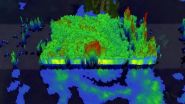(Press-News.org) Tamiflu (the antiviral drug oseltamivir) shortens symptoms of influenza by half a day, but there is no good evidence to support claims that it reduces admissions to hospital or complications of influenza. This is according to the updated Cochrane evidence review, published today by The Cochrane Collaboration, the independent, global healthcare research network and The BMJ. Evidence from treatment trials confirms increased risk of suffering from nausea and vomiting. And when Tamiflu was used in prevention trials there was an increased risk of headaches, psychiatric disturbances, and renal events. Although when used as a preventative treatment, the drug can reduce the risk of people suffering symptomatic influenza, it is unproven that it can stop people carrying the influenza virus and spreading it to others.
The latest updated Cochrane Review: Neuraminidase inhibitors for preventing and treating influenza in healthy adults and children, is based on full internal reports of 20 Tamiflu (oseltamivir) and 26 Relenza (zanamivir) trials. These trials involved more than 24,000 people and the findings challenge the historical assumption that neuraminidase inhibitors are effective in combating influenza. The evidence also suggests there are insufficient grounds to support the use of Tamiflu in preventing person-to-person spread of influenza. This raises further questions about the most effective way to support drug regulation and public health policy decision-making. Claims about the effectiveness of Tamiflu against complications were a key factor in decisions made by governments around the world to stockpile these drugs in case of a pandemic. The US has spent more than $1.3 billion buying a strategic reserve of antivirals, while in the UK the government has spent almost £424 million for a stockpile of about 40 million doses*.
In 2009, a lack of access to available trial data hampered the efforts of the Cochrane researchers to verify the safety and effectiveness of Tamiflu – and led to questions over decisions to stockpile the drug while the risks and benefits remained uncertain. Today, The BMJ and Cochrane issue a joint call to government and health policy decision makers the world over, asking in light of the latest findings from the Cochrane Review, would you make the same recommendations today, choosing to stockpile Tamiflu?
Compared with a placebo, taking Tamiflu led to a quicker alleviation of influenza-like symptoms of just half a day (from 7 days to 6.3 days) in adults, but the effect in children was more uncertain. There was no evidence of a reduction in hospitalisations or serious influenza complications; confirmed pneumonia, bronchitis, sinusitis or ear infection in either adults or children. Tamiflu also increased the risk of nausea and vomiting in adults by around 4 percent and in children by 5 percent. There was a reported increased risk of psychiatric events of around 1 percent when Tamiflu was used to prevent influenza. Evidence also suggests that Tamiflu prevented some people from producing sufficient numbers of their own antibodies to fight infection.
The worldwide use of Tamiflu, has increased dramatically since the outbreak of H1N1 virus (Swine Flu) in April 2009. It was initially believed that it would reduce hospital admissions and complications of influenza, such as pneumonia, during influenza pandemics. However, the original evidence presented to government agencies around the world was incomplete. The Cochrane Review has benefited from access to more complete reports of the original research, now made available by the manufacturers, Roche and GlaxoSmithKline. Although the review has confirmed small benefits on symptom relief, there is little to justify any belief that it reduces hospital admission or the risk of developing confirmed pneumonia. Along with the evidence of harms from the medication, it raises the question of whether global stockpiling of the drugs is still justifiable given the lack of reliable evidence to support the original claims of its benefits.
Dr David Tovey, Editor-in-Chief, Cochrane, said: "We now have the most robust, comprehensive review on 'neuraminidase inhibitors' that exists. Initially thought to reduce hospitalisations and serious complications from influenza, the review highlights that Tamiflu is not proven to do this, and it also seems to lead to harmful effects that were not fully reported in the original publications. This shows the importance of ensuring that trial data are transparent and accessible."
Dr Tom Jefferson, Dr Carl Heneghan, Dr Peter Doshi, authors of the review, Cochrane Neuraminidase Inhibitors Review Team, said: "Drug approval and use cannot be based on biased or missing information any longer. We risk too much in our population's health and economy. This updated Cochrane review is the first time a Cochrane systematic review has been based only on clinical study reports and regulator's comments. It is the first example of open science in medicine using full clinical study reports available without conditions. And therefore the conclusions are that much richer. We urge people not to trust in published trials alone or on comment from conflicted health decision makers, but to view the information for themselves."
The review clearly recommends that guidance on the use of both neuraminidase inhibitors (oseltamivir and zanamivir) in the prevention or treatment of influenza should be revised to take account of the evidence of small benefit and increased risk of harms.
Dr Fiona Godlee, Editor-in-Chief, The BMJ, said: "This review is the result of many years of struggles to access and use trial data, which was previously unpublished and even hidden from view. It highlights with certainty that future decisions to purchase and use drugs, particularly when on a mass scale, must be based on a complete picture of the evidence, both published and unpublished. We need the full data from clinical trials made available for all drugs in current use. With the new European Clinical Trials Directive bringing in rules for future drugs, it highlights the enormous challenge we face. We need the commitment of organisations and drug companies to make all data available, even if it means going back 20 years. Otherwise we risk another knee-jerk reaction to a potential pandemic. And can we really afford it?"
INFORMATION:
*Reference: HHS spent nearly a quarter of the funds (about $1.30 billion) on activities related to developing and stockpiling antiviral drugs. GAO report
The Department of Health spent £424 million on stockpiling Tamiflu. http://www.publications.parliament.uk/pa/cm201314/cmselect/cmpubacc/295/295.pdf
Tamiflu & Relenza: How effective are they?
The BMJ and Cochrane call on government and health policy decision makers to review guidance on use of Tamiflu in light of most recent evidence
2014-04-11
ELSE PRESS RELEASES FROM THIS DATE:
NASA sees hurricane-strength Tropical Cyclone Ita heading toward Queensland
2014-04-10
VIDEO:
On April 9, NASA's TRMM saw powerful storms in Ita's eye wall reached heights of over 14 km/8.7 miles. The tallest thunderstorm towers reached heights of over 16 km/9.9 miles...
Click here for more information.
Tropical Cyclone Ita has been strengthening over the last two days and by April 10, Ita had become a major hurricane in the Coral Sea when NASA's Terra satellite passed overhead.
Ita's maximum sustained winds were near 115 knots/132 mph/213 kph on April 10 at 0900 ...
Appearance of night-shining clouds has increased
2014-04-10
First spotted in 1885, silvery blue clouds sometimes hover in the night sky near the poles, appearing to give off their own glowing light. Known as noctilucent clouds, this phenomenon began to be sighted at lower and lower latitudes -- between the 40th and 50th parallel -- during the 20th century, causing scientists to wonder if the region these clouds inhabit had indeed changed -- information that would tie in with understanding the weather and climate of all Earth.
A NASA mission called Aeronomy of Ice in the Mesosphere, or AIM, was launched in 2007 to observe noctilucent ...
NASA simulation portrays ozone intrusions from aloft
2014-04-10
Outdoor enthusiasts in Colorado's Front Range are occasionally rewarded with remarkable visibility brought about by dry, clear air and wind. But it's what people in the mountainous U.S. West can't see in conditions like this – ozone plunging down to the ground from high in the stratosphere, the second layer of the atmosphere – that has attracted the interest of NASA scientists, university scientists and air quality managers.
Ozone in the stratosphere, located on average 10 to 48 kilometers (6 to 30 miles) above the ground, typically stays in the stratosphere. Not on days ...
NASA's Hubble extends stellar tape measure 10 times farther into space
2014-04-10
Using NASA's Hubble Space Telescope, astronomers now can precisely measure the distance of stars up to 10,000 light-years away -- 10 times farther than previously possible.
Astronomers have developed yet another novel way to use the 24-year-old space telescope by employing a technique called spatial scanning, which dramatically improves Hubble's accuracy for making angular measurements. The technique, when applied to the age-old method for gauging distances called astronomical parallax, extends Hubble's tape measure 10 times farther into space.
"This new capability ...
SU plays key role in search for elusive dark matter
2014-04-10
Physicist Richard Schnee hopes to find traces of dark matter by studying particles with low masses and interaction rates, some of which have never been probed before.
The ongoing search for invisible dark matter is the subject of a recent article involving physicists from Syracuse University's College of Arts and Sciences.
Research by Richard Schnee, assistant professor of physics, is referenced in Symmetry magazine, a joint publication of the Stanford Linear Accelerator Center in Palo Alto, Calif., and Fermilab in Batavia, Ill.
"Scientists looking for dark matter ...
SU geologists prove early Tibetan Plateau was larger than previously thought
2014-04-10
Earth scientists in Syracuse University's College of Arts and Sciences have determined that the Tibetan Plateau—the world's largest, highest, and flattest plateau—had a larger initial extent than previously documented.
Their discovery is the subject of an article in the journal Earth and Planetary Science Letters (Elsevier, 2014).
Gregory Hoke, assistant professor of Earth sciences, and Gregory Wissink, a Ph.D. student in his lab, have co-authored the article with Jing Liu-Zeng, director of the Division of Neotectonics and Geomorphology at the Institute for Geology, ...
SU professors test boundaries of 'new physics' with discovery of 4-quark hadron
2014-04-10
Physicists in Syracuse University's College of Arts and Sciences have helped confirm the existence of exotic hadrons—a type of matter that cannot be classified within the traditional quark model.
Their finding is the subject of a forthcoming article, prepared by the Large Hadron Collider beauty (LHCb) Collaboration at CERN in Geneva, Switzerland. (LHCb is a multinational experiment, designed to identify new forces and particles in the universe.) Tomasz Skwarnicki, professor of physics, is one of the paper's lead authors.
"We've confirmed the unambiguous observation ...
ACP offers policy recommendations for reducing gun-related injuries, deaths in US
2014-04-10
April 10, 2014 -- A new policy paper from the American College of Physicians (ACP) offers nine strategies to address the societal, health care, and regulatory barriers to reducing firearms-related violence, injuries, and deaths in the United States. Reducing Firearm-Related Injuries and Deaths in the United States is published today in the peer-reviewed medical journal, Annals of Internal Medicine.
Principal among ACP's nine strategic imperatives is the recommendation to approach firearm safety as a public health issue so that policy decisions are based on scientific ...
Single mothers don't delay marriage just to boost tax credit, study says
2014-04-10
MADISON, Wis. – When the Earned Income Tax Credit was expanded in 1993, supporters hoped it would reward poor parents for working while critics feared that it might discourage single mothers from marrying or incentivize women to have more children to boost their tax refund.
A new collaborative study done by the University of Wisconsin-Madison and Cornell University reveals the EITC has helped the working poor but hasn't affected personal choices.
Sarah Halpern-Meekin, assistant professor of human development and family studies and affiliate of the Institute for Research ...
Antennae help flies 'cruise' in gusty winds
2014-04-10
Due to its well-studied genome and small size, the humble fruit fly has been used as a model to study hundreds of human health issues ranging from Alzheimer's to obesity. However, Michael Dickinson, Esther M. and Abe M. Zarem Professor of Bioengineering at Caltech, is more interested in the flies themselves—and how such tiny insects are capable of something we humans can only dream of: autonomous flight. In a report on a recent study that combined bursts of air, digital video cameras, and a variety of software and sensors, Dickinson and his team explain a mechanism for ...
LAST 30 PRESS RELEASES:
Pre-school health programme does not improve children’s diet or physical activity, prompting call for policy changes, study finds
Autumn clock change linked to reduction in certain health conditions
AI images of doctors can exaggerate and reinforce existing stereotypes
Where medicine meets melody – how lullabies help babies and parents in intensive care
We may never be able to tell if AI becomes conscious, argues philosopher
AI video translation shows promise but humans still hold the edge
Deep ocean earthquakes drive Southern Ocean’s massive phytoplankton blooms, study finds
Without campus leftovers to pick through, the beaks of this bird changed shape during the pandemic
High-dose antibiotic does not reduce mortality in tuberculous meningitis
How many insects fly in the sky above the USA?
Could cheese protect your brain health?
Who faces more difficulty recovering from stroke?
Colliding galaxies create the brightest, fastest growing black holes at their center
New BrainHealth research reveals tradeoffs on sleep with cannabis use for chronic pain
Aging-US now on ResearchGate, enhancing visibility for authors and readers
'Molecular glue' stabilizes protein that inhibits development of non-small cell lung cancer
Mount Sinai Health System is recognized in 2025 Chime Digital Health Most Wired survey
From prey to predator: How carnivores spread beneficial fungi
Menopause symptoms may be frequent and have negative effects, according to female endurance athletes
US Congressmembers’ responses on X to mass shooting events differ along party lines
KAIST-UEL team develops “origami” airless wheel to explore lunar caves
Individual genetic differences render some therapies ineffective
Engineering dendritic cells boosts cancer immunotherapy
Sophisticated neuroimaging reveals PTSD in WTC responders is linked to measurable physical changes in brain structure
Health policy experts identify promising strategies for providing health care to homeless people
Study explores role of neutrophils in canine atopic dermatitis
Mayo Clinic researchers develop AI-ECG model to diagnose liver disease earlier
Heavy menstruation common among teenage girls – questionnaire reveals risk of iron deficiency
New study explores why open water swimming feels so powerful for midlife women
In echo of Jurassic Park, mosquitoes capture entire ecosystems in their blood meals
[Press-News.org] Tamiflu & Relenza: How effective are they?The BMJ and Cochrane call on government and health policy decision makers to review guidance on use of Tamiflu in light of most recent evidence





